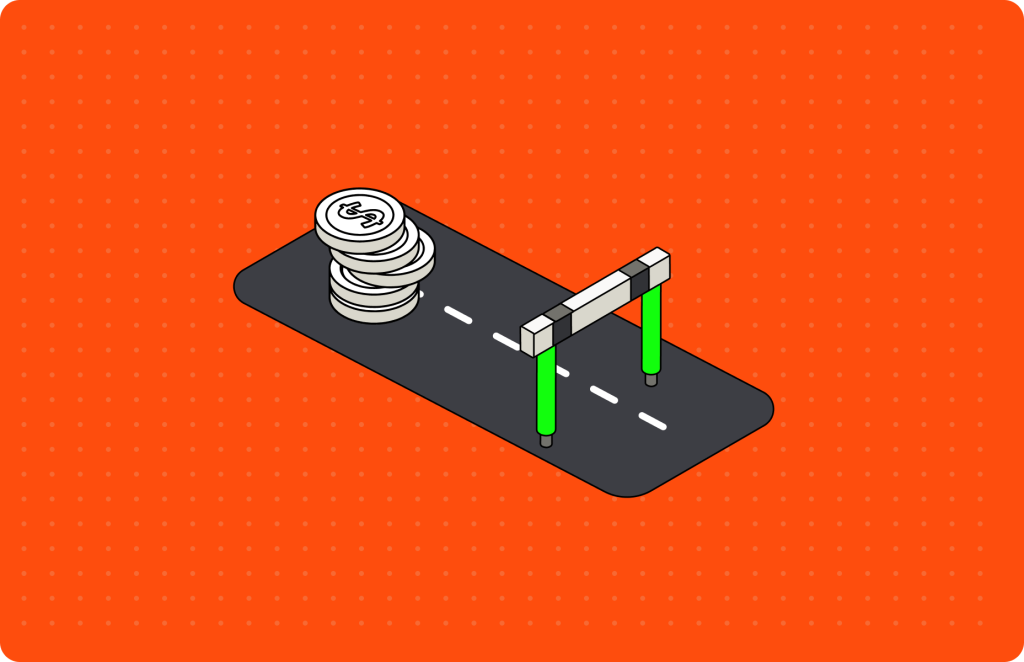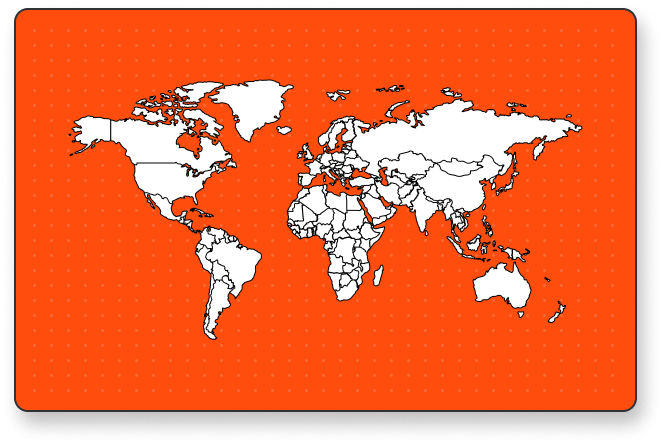Brokerage Business
10 minutes read
Mar 25, 2025
How to Launch a White Label CFD Brokerage
Launching a CFD brokerage has never been easier. If you want to start trading platform development without building it all by yourself, white label CFD would be your easy and perfect choice. It is the fastest, cheapest, and most scalable way for starting out or a brokerage looking to extend its services. Yet, what should you have to set up a white label brokerage successfully? Here are a few things to ponder:
- Choose the right provider – The technology, liquidity, and support to depend on shall make or break your success in the brokerage industry.
- Regulatory navigation – Simply put, the best way to avoid landing up in a legal tango with financial authorities is to comply with their demands.
- Building a strong brand – The CFD marketplace is competitive, making it necessary for any player to give clever marketing a great look and build a reputation among clients.
- Effective risk management – This is about putting in place a robust risk management process that allows for sustainable profits and continuous stay in the market.
Our industry guide teaches a potential broker everything they need to know about building and growing a white label CFD from scratch: set up and regulation to customer acquisition and revenue flows. Let’s get down to it!
What is CFD Trading?
Contracts for Difference are one of the more versatile and popular approaches in modern-day trading. Instead of buying the actual asset, such as stocks, commodities, or currencies, you simply enter a contract whereby you earn profits based on price movement. It enables taking into account both market movements, ups and downs, without ever needing direct ownership of an asset. You basically have the speculation of whether an asset price will rise long or decline short.
Hence, both-direction trading makes CFDs attractive to traders who want to profit in bull and bear markets alike. This can be any of its kinds, from gold, oil, and various indices to crypto and forex, offering an array of possibilities for traders to accumulate their portfolios. CFDs are unique in that they offer great leverage, helping to undertake more prominent positions with limited capital. So, a trader can gain exposure to substantial market movements without actually owning an asset.
But while leverage can amplify gains, at the same time, it dramatically magnifies risks, and hence risk management is an essential aspect for any CFD trader. CFD provides an easy access to the markets. There is no need for broker approval like in traditional investing or possession of the underlying asset; therefore, you open and close an account in a very short period of time and take advantage of high execution speed with lower capital requirements. Under this condition, CFD trading is particularly useful for short-term strategies – day trading and swing trading.
Because CFD trading is flexible, accessible, and allows traders to profit under any market condition, it has gained significant appeal among both novice and experienced investors. However, traders need to develop a complete understanding of factors affecting the market, risk management techniques, and trading strategies to reach their objectives.
Forex vs. CFD Brokerage
Both Forex trading and CFD brokerage services offer traders an opportunity to make good profits; however, each works differently. While Forex only trades currencies, CFDs open traders to many more assets, including commodities, indices, and even cryptocurrencies, other than stocks.
Apart from being the largest, Forex is still the most liquid of all markets, with a daily volume that can be upwards of $7.5 trillion. A trader usually takes a position in Forex based on the movements of a particular currency against other currencies, like the dollar against the euro or the British pound against the Japanese yen – fluctuating prices are mainly influenced by economic indicators, central bank policies, and even geopolitical events. Conversely, CFD trading is more varied and allows traders to take a position on different asset classes without actually owning those assets.
Here’s a quick comparison of Forex versus CFD brokerage services:
| Feature | CFD | Forex |
| Asset Type | Several assets, including stocks, commodities, indexes, and cryptocurrency | Currency pairs |
| Liquidity | Varies according to asset class; certain CFDs are less liquid than others. | Market liquidity, as well as the daily trading volume is high. |
| Trading Style | Based on conjecture of price changes in other marketplaces | Using exchange rates to purchase and sell currency pairs |
| Leverage | High leverage is possible, albeit it varies by asset class. | Gives more leverage than CFDs in general. |
| Market Influence | Influenced by business profits, market movements, and geopolitical risks | Motivated by central bank policy, interest rates, and macroeconomic developments |
| Market Hours | Depending on the asset (stock CFDs, for example, are subject to exchange hours) | 24/5 market that operates continuously across time zones |
Which Trading Model Should You Choose?
Forex is likely your best choice if you favor a market with high liquidity available at all hours. If you are considering asset diversification, CFDs allow you to trade various assets other than currency pairs. Forex and CFDs have different risk profiles and require different trading strategies; understanding these differences will assist traders in developing a more balanced trading portfolio.
Whether you are launching a white label brokerage in the Forex market or a white label brokerage for CFDs, your success will depend on the individual trading platform, the liquidity provider, and the risk management strategy.
Key Components of a CFD Brokerage
Establishing a successful CFD brokerage takes more than simply running a trading platform. Several essential and interconnected elements support the brokerage industry, engaging in critical functions of operations, compliance, and user experience. Whether this is through liquidity providers, risk processes, trading platforms, or customer support, all of these functions are needed to promote customer engagement and retention.
Below is a high-level overview of the most critical elements of a successful CFD brokerage.
Trading Platform
An efficient trading platform is the center of any CFD brokerage. Your platform should provide real-time market data, fast execution, trading analysis tools, and seamless order execution. Whatever your decision on whether to use MetaTrader 4/5 (MT4/MT5) or a custom solution, your platform must maintain a seamless and intuitive user experience for new and professional traders alike.
Back Office System
A strong back office system is a cornerstone to a team that is able to effectively manage all aspects of account management, deposits, withdrawals, reporting, and compliance tracking. It also makes the trader’s life easier by allowing them to fund their accounts, access statements, and look at trading history, all within a secure environment.
Risk Management & Compliance
An adequately designed risk management system enables brokers to limit exposure and protect against financial loss. It employs A-book (direct market access) and B-book (internalization) execution models, dynamic hedging, and exposure monitoring. Regulatory compliance is crucial to maintaining broker credibility and protecting client funds. These compliance requirements are determined by financial regulations in entities such as CySEC, FCA, or ASIC.
Marketing & Client Acquisition
A successful CFD brokerage doesn’t just operate – it grows. Effective digital marketing strategies, affiliate programs, and partnerships are critical for brokers to grow their trader base as well as retain clients that they currently have. Great Search Engine Optimization (SEO), content marketing, and social media engagement will help drive traffic, while referral programs will incentivize traders to recruit new users to the platform.
Payment Processing and Funding Options
Providing secure payment methods is essential to attract traders from different parts of the world. Your clients should be able to select between bank transfers, credit cards, crypto options, and even e-wallet options like PayPal, Skrill, or Neteller. Overall, having a smooth deposit and withdrawal process will enhance the user experience and instill trust.
Customer Support & Retention
Multilingual daily (24/5 or 24/7) support is easier than ever and essential to keeping traders confident. Quick response times, knowledgeable support agents, and several communication channels can earn trust and differentiate satisfied traders from lost customers.
Liquidity Providers
Liquidity is the lifeblood of any CFD brokerage. Working with high-quality liquidity providers (LPs) ensures tighter spreads, more profound order books, and less slippage. A quality LP allows brokers to provide competitive pricing while supporting consistent, stable liquidity, enabling clients to execute orders efficiently, even under volatile market conditions.
Steps to Launch a White Label CFD Brokerage
Launching a White Label CFD brokerage is a budget-friendly method to enter the online trading sector and does not require you to build a platform from scratch. Building a CFD brokerage from the ground up requires at least six months as a base and usually costs around $150,000+ for technology, licensing, and operational costs. A White Label option is a fast and cost-effective option for a CFD brokerage. Using our trading infrastructure, you can launch your White Label solution in less than two weeks, with costs starting at around $25,000. Here’s how to do it:
Research the Market
Research gaps in competitors and the wants of traders, using:
- SWOT (Strengths, Weaknesses, Opportunities, and Threats)
- Porter’s Five Forces (to judge your market position and competition)
- Target Audience Research (to clarify your market niche: retail traders, institutional clients, or algo traders)
Choose a White Label Provider & Understand Costs
Choose a provider with solid technology, access to liquidity, and scalability. Typically, fees would include:
- Set-Up Fees: From $25,000 Monthly
- Licensing and Maintenance Fee: $2,000-$10,000
- Liquidity Provider Fees: Variable, based on spreads and commissions
- Regulatory & Compliance Costs: $20,000 – $200,000, depending on your jurisdiction.
Obtain Regulatory Licensing and Compliance
Choose a license that is aligned with your market:
- Top-Tier: FCA, ASIC, CySE, which are highly trusted but have tighter restrictions.
- Mid-Range: Belize, Seychelles, IFSC, which have balanced regulations and are easier to obtain.
- Offshore: St. Vincent, Marshall Islands, which are relatively cheap and fast to set up but with limited trust.
Find Liquidity Providers
Reliable liquidity makes trading efficient and lowers spread costs. Best practices:
- Utilize Multiple LPs – Reduce dependence on one provider.
- Deepen Order Books – Guarantee low slippage even in volatile markets.
- Aggregate Liquidity – Allows traders to see the best bid/ask prices.
Build a Solid Marketing Strategy
Use multi-channel marketing to attract traders through:
- SEO & Paid Ads – Improve rankings and drive PPC campaigns.
- Affiliate & IB Programs – Gain exposure through referral programs.
- Social Media & Community Building – Interact with traders on platforms like YouTube, Telegram and Discord.
Thus, a White Label CFD brokerage is a more affordable option for obtaining a full-fledged brokerage, starting at a minimum cost of $20,000 and having a launch time of as few as 2 weeks. As with any new enterprise, your success will largely depend on selecting a quality provider, meeting licensing and regulatory requirements, establishing liquidity, and implementing effective marketing.
Future View for White Label CFD Brokerages
The industry around White Label CFD brokerages is about to undergo a significant period of change, propelled by technology and changes in regulatory environments. As financial markets become more digitized and AI-driven, those brokerages that embrace new technology will be at an advantage.
Technological Developments
The future of CFDs trading will be influenced by AI-driven analytics, blockchain integration, and automation. Expect:
- AI-driven trading insights – Machine learning algorithms to provide real-time market analysis and predictive modeling.
- Blockchain technology – Providing increased trade transparency and security while enabling faster settlements through smart contracts.
- Mobile-first trading platforms – Increased interest in more intuitive trading experiences that allow trading on the go.
Changing Regulatory Environments
In response to the growth of the CFD industry, regulators around the world are increasing their oversight to safeguard traders and maintain the stability of the markets. The main trends are:
- Stricter limits on leverage – Regulators may enforce restrictions on the amount of leverage allowed to protect the retail trader.
- Stronger KYC and AML policies – Compliance standards increase to prevent fraud and money laundering.
- Regional regulatory changes – More states may require licensing, which may create a situation where offshore brokers seek more regulation.
Concluding Remarks
Starting a White Label CFD brokerage is the quickest and easiest way to enter the trading space, as it requires low startup costs and can be set up quickly if done with the right service provider, the right liquidity structure, and adequate marketing. You can build a profitable and scalable business model in weeks rather than months.
The future will belong to brokerages that implement AI, blockchain, and mobile trading while also staying ahead of regulatory change. What is critical is to adapt, evolve, innovate, and provide traders with an above-average trading experience; if you do this successfully, your brokerage won’t just survive – it will thrive.
FAQ
95

Written by Ivan Bogatyrev
Business Development at FintechFuel
Writing about the exciting worlds of iGaming and the brokerage business, breaking down the latest trends and insights. Making complex topics easy to understand, helping readers stay informed and ahead of the curve.
More by authorRead more

Brokerage Business
10 minutes read
Sep 30, 2025
The brokerage industry in 2026 is entering a new phase shaped by technology, regulation and shifting client demands.


